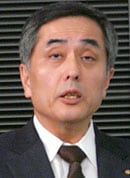[ 2nd Quarter of fiscal 2011 Performance Briefing ]Passive Components Business
Mr. Shinichi Araya
Director
Senior Vice President
I would like to give you an overview of the passive components business.
Year-on-Year and Quarterly Comparisons of Net Sales in the Passive Components Business
Let me first present year-on-year and quarterly comparisons of net sales in the passive components business.
In the second quarter, capacitors recorded net sales of ¥37.7 billion. This represented 34.5% of segment sales, and an increase of ¥4.2 billion, or 12.4%, year on year. Next, inductive devices registered second-quarter sales of ¥34.3 billion, which accounted for 31.3% of segment sales. This was a ¥5.4 billion, or 18.6%, increase from the second quarter of the previous fiscal year. In other passive components, second-quarter sales were ¥37.5 billion, or 34.2% of segment sales, representing an increase of ¥6.2 billion, or 19.8%, from the second quarter of fiscal 2010. Together, total segment sales were ¥109.5 billion, an increase of ¥15.7 billion, or 16.8%, year on year.
Quarterly Comparisons of Major Passive Components Products (1Q vs 2Q)
Next, I will discuss quarterly comparisons between the first and second quarters of fiscal 2011. In the second quarter, capacitor sales decreased by ¥0.2 billion, or 0.6%, from ¥38.0 billion in the first quarter. Inductive device sales increased ¥1.8 billion, or 5.5%, from ¥32.5 billion in the first quarter. Sales of other passive components rose ¥2.9 billion, or 8.3%, from ¥34.6 billion in the first quarter. Overall, total segment sales in the second quarter increased by ¥4.2 billion, or 4.2%, compared with the first quarter.
Let me continue by explaining the factors behind changes from the first to second quarters. First is the 0.6% decline in capacitor sales. In the second quarter, we maintained mostly the same monetary sales of ceramic capacitors as in the first quarter atop firm sales in the automobile and communications equipment markets. As explained previously, we completed the consolidation of overseas packaging facilities in the first half of fiscal 2011, and have stepped up our operations in China. From the second half, by speeding up such overseas initiatives, deploying new processes, and taking other measures, we will strive to enhance our cost competitiveness while upgrading our product lineup in order to restore our competitiveness.
Turning to aluminum electrolytic and film capacitors, this is another area of firm growth. Production of capacitors mainly for industrial equipment and renewable energy devices continued to run at full capacity throughout the second quarter. However, with a high share of sales denominated in foreign currencies, monetary sales have declined on a yen basis. The 0.6% decrease in capacitor sales was caused by these exchange rate differences. However, we expect the market for these products to continue to steadily expand going forward. Therefore, we will focus on optimizing the supply structure, including ramping up production capacity, as we head into the next fiscal year.
Meanwhile, inductive devices maintained their strong first-quarter momentum in the second quarter. EMI filters for mobile phones, particularly smartphones, and tablet PCs, as well as power choke coils and certain other products performed well. We also posted higher sales of noise filters for industrial equipment and renewable energy devices. Demand is projected to continue increasing going forward. Therefore, from the second half, we will boost our production capacity, while bringing highly competitive new products to market.
Finally, let me say a few words about the other passive components category. This category includes high-frequency components, piezoelectric materials and sensors. As explained in the past, in the area of high-frequency components, TDK has launched various modules for mobile phones by leveraging synergies with EPCOS. These products are driving sales growth. As we look ahead, we will roll out many new products for smartphones and other 3G handheld devices, where growth is expected. In terms of piezoelectric materials and sensor-related items, we are seeing strong sales of circuit protection components, including actuators and varistors for smartphones. Sales of piezoelectric materials and sensors for automobile components and industrial equipment are also holding firm. While continuing to expand existing businesses, TDK intends to actively launch piezoelectric components for HDD suspension assemblies, along with various sensors for automobiles and other products.
That concludes my presentation on passive components. Thank you.


